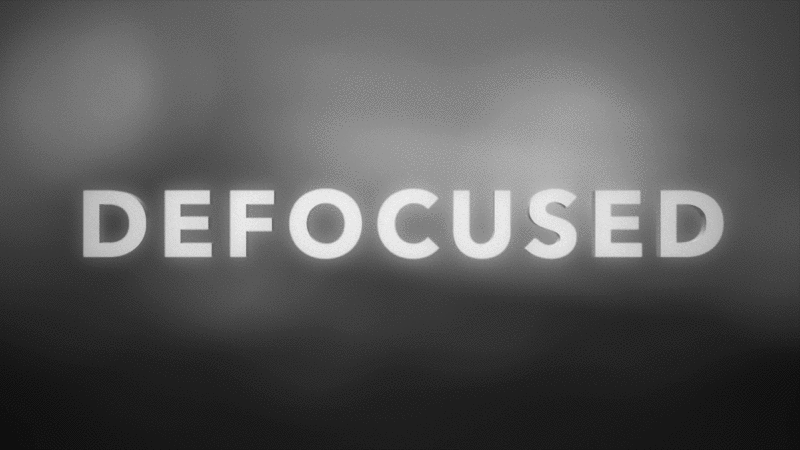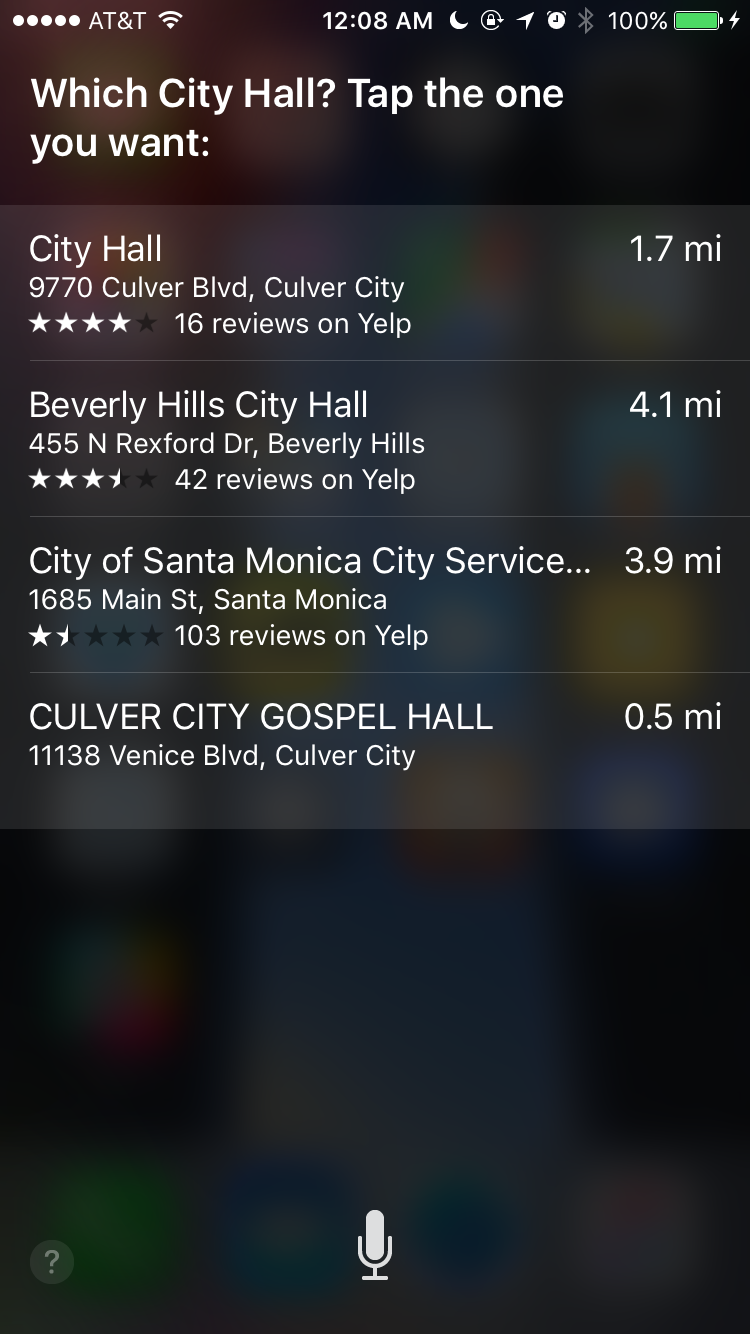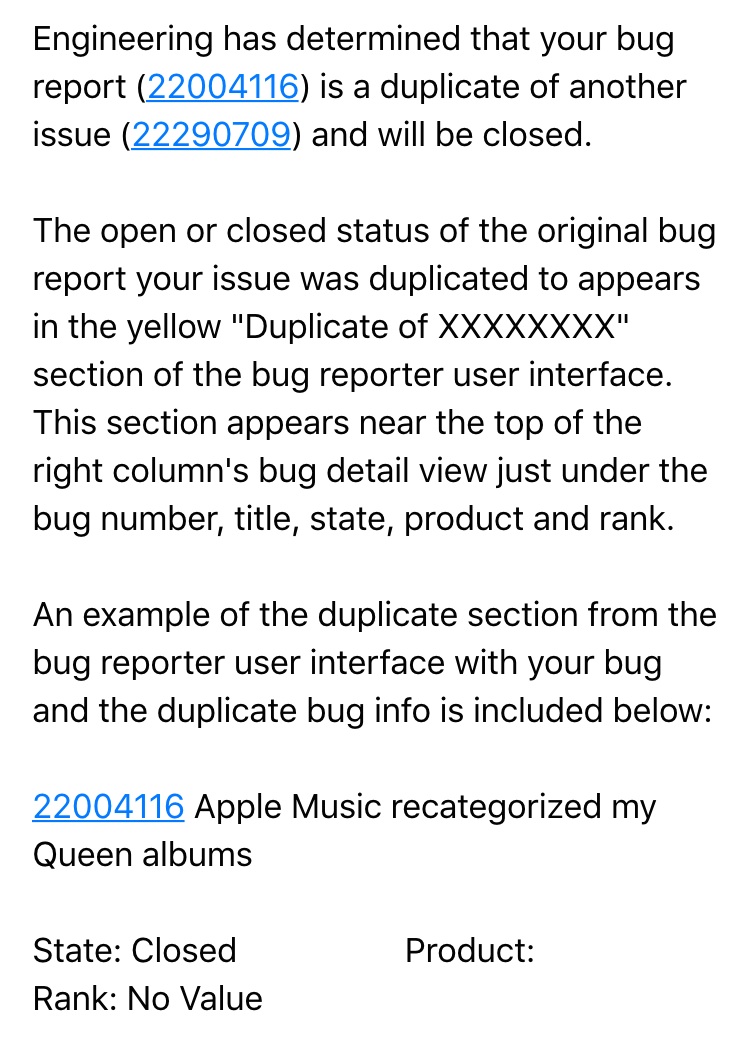Anyone that reads this blog knows that I have some passionate feelings about Apple’s media ecosystem. Seems pretty natural, since I work in media, and I quite like Apple. This does lead me to be critical when I see some shortcomings. If you just want to feel happy, and smile, then read my overall summary here, and no further: I like it. I do not love it. I wouldn’t draw a little heart next to it. We are not sitting in a tree, K-I-S-S-I-N-G. The device would benefit greatly from some more work. I also would only recommend the device to people that own a previous generation Apple TV, or earlier. I am not going to buy one for everyone I know, or tell them to do so.
(Rolls up sleeves)
OK then.
This was not the most elegant release of an Apple product ever. They announced that it would be available in October in September. Then, at the end of October, it was available for order on that last Monday in the U.S. Free shipping would get you the device as early as Monday, November 2nd. Paying extra could get it to you on the 30th of October. In store availability was listed as “Coming Soon”. Fearing that meant the supply was constrained, I picked the free shipping option. I typically prefer to pick up in store because I work long hours and don’t like the thought of a box sitting around for many hours on a weekday.
Of course, Wednesday there were rumors that stores would have the devices on Friday, the 30th. This is sooner than my estimated shipping time. I could not cancel my order because it was in a stage referred to as “preparing for shipment”. I contacted customer support, and there was nothing they could do. It would be shipped, and delivered, and then I could return it if I wanted. Knowing this, I went to Century City Mall’s Apple Store and bought an Apple TV Saturday, October 31st. Happy Halloween. The sales process in the store was smooth and pleasant. I was not offered an HDMI cable, but didn’t need one. I planned to return the shipping device.
This is pretty far from a graceful product launch. It just shows up Monday. No availability for stores is listed, and then by that Friday, it’s available in stores before it’s shipped for people that might have bought on Monday. Crummy.
Even more annoying is that as I write this, that delivery TV unit was marked as “delivered” by the company Apple contracted with, OnTrac, and is nowhere to be found. That’s my fault for putting any faith in getting something delivered when I’m not home (first time in 10 years anything’s gone missing). I really should have waited and not ordered at all on that Monday. I was too excited to have one, and now I’m out $163 — unless it turns out it’s been misplaced. (OnTrac wouldn’t return my calls or email, and I had to send a public-shaming tweet on Twitter before a representative got in touch. They let me know that I can’t deal with them, I have to call a special number for Apple and talk to them.)
UPDATE: This shipping situation was resolved.
When connected to your TV, and to power, the Apple TV prompts you to get started with the install process. You’re offered the opportunity to load data from your nearby phone to assist with the setup process. As Jason Snell, Myke Hurley, and I all detailed on Upgrade 61, this process is a bit of a mixed bag. The Bluetooth setup didn’t work at all for Myke. The setup worked for Jason Snell and I. Also, when I moved my new Apple TV from my boyfriend’s apartment to my apartment it wasn’t automatically on my WiFi network. I’m guessing it only copies WiFi credentials from your iPhone, but I listened to Dan Benjamin say that it worked for him when he took his from his office to his home. I’m not sure why that worked for him and not for me, but I would need more data, and I’m fresh out of WiFi locations and TVs.
There’s no mechanism to trigger the pairing again, from what I could tell, other than a device reset, I assume. The only reason this is even worth mentioning is because it is an absolutely terrible experience to type passwords on the Apple TV. The whole alphabet on a row, and a narrow touchpad, lead to a lot of frustration as you try not to overshoot or undershoot letters. Unlike previous Apple TV devices, this is the only way to enter text.
As Myke opined on the episode of Upgrade I was on, the new TV doesn’t include an Haytch-DMI cable. Jason Snell relayed a story that he was asked if he had a cable by the Apple Employee he picked up his device from. The employee I collected my device from made no such offering/warning. It didn’t take me by surprise of course, because… well I wouldn’t be writing these blog posts if it took me by surprise. Myke was concerned that many people would assume the cable would be included. If you do need one, get Amazon Basics, or Monoprice, or whatever. No rose-gold-plated HDMI cables for me.
Apple does include a Lightning cable, which they charge a pretty penny for when you buy one by itself, so it’s not like they’re worried about the expense of a cable. Also, I have a lot of Lightning cables at this point, and I’m willing to bet all Apple TV customers do. The remote even comes with a charge, which is the only reason to use the cable. Since there are minor variations in HDMI cables, it seems like it would be better to include that and exclude the lightning cable for a comparable cost.
The one thing I had wondered about for many months was whether or not the Apple TV would support an updated version of the Remote iOS app. Then all the press reviews started to come in, and the app is not supported, much to my chagrin. When I talked to Jason Snell on Upgrade, I was surprised to learn that he had asked about this back at the first product announcement and had been told by an Apple representative that it would not be supported at all. Not a “maybe” or a “later” but a “no”.
The new Apple TV also dropped support for Bluetooth keyboards.
I feel like this is an enormous mistake. The process of text entry is like sliding your thumb back and forth over the width of a ruler. This makes no sense to me given the number of times that you can enter text during the setup process. Even after a successful Bluetooth pairing, you’re still entering iCloud and iTunes account passwords (almost always the same) and at some point you’ll be prompted to either enter your CCV number from the credit card associated with your iTunes account, or to use iTunes on a computer to update your payment info. Jason Snell experienced the later and detailed it a bit on Upgrade, and in a post for his site.
It was far easier to enter passwords using the old Remote app for iOS. I didn’t even like the Remote app but I’m even less in-like with not having one at all.
Not only that, but the capabilities of the Siri Remote match those of most iPhones — in fact most iPhones surpass them. One particular area that most modern iPhones excel is in securing your identity and verifying your purchases. The TV doesn’t care one lick about that. Even when they know that entering the password over and over is annoying, the solution is “ask every time”, “ask once every 15 minutes”, and “do not ask again”. Which is not a secure solution when you think about what people are going to select after having to deal with entering passwords through the setup process.
Also consider the number of people that will be using the device in a household.
The new remote comes with many of the sensors the iPhone has. It even has a touch sensor that uses glass. Although the touch sensor is more like a very tiny trackpad than a screen. Very tiny.
I feel like they aren’t of much use. You see, tvOS doesn’t use them for anything other than the parallax effects. That’s it. The rest is all for games apps, which are terrible to play with Apple’s remote. I’ve been told that the games are better with third party game controllers, but that’s not what the TV ships with, and Apple doesn’t offer their own.
The touchpad calibration seems slightly off for me. I’ve tried the options for adjusting the touchpad sensitivity in Settings, but even at it’s highest sensitivity, I frequently skip one past, and go one short. It’s not as precise as a directional pad — a D-Pad.
Confusingly, the whole Apple TV interface works with the previous generation remote, or with a universal remote of your choosing. That makes it feel like there’s even less of a reason for all the fanciness of the remote. A part of me wonders if it would have been better to target a lower price point by using a directional remote with a microphone. A substantial portion of the device’s expense seems to be tied up there. Offload the gaming experience to a real controller, since I think the remote is an absolutely terrible game controller in every game I’ve played.
Disney Infinity 3.0 - Battle for Yavin, is available for the device, and it was something Phil Schiller was very excited about at the product launch. However, this is the worst game I tested. The remote needs to be held sideways, and it’s far too small for that. It’s like I’m trying to hold a doll-sized teacup and saucer to play a game. The buttons also don’t have the right responsiveness for a game controller in this configuration, and the touchpad is, again, too small.
Siri has functioned much better on the TV than I had assumed it would. Most queries, and commands, work as expected. I don’t like to use it to command the TV, but that might be because I’m not used to talking to the remote. The few cases that seem to trip it up have to do with words that sound the same. Unfortunately, when I asked for Star Trek II: The Wrath of Khan Siri transcribed it as “Star Trek two the wrath of con”. No results, of course, because no movie is named that. Unfortunately, it’s not smart enough to use context to resolve a situation like that. Jason Snell had some similar experiences when he was looking for something with a very generic name, Spy.
It’s worked for every actor, and character, I could think to test so far. It’s also nice that you can phrase your command to only return Netflix results. I knew that Netflix would be in Universal Search but I am elated that it can be used as a filter for searching.
This works as advertised. Netflix is returned first for any titles where it’s present, over iTunes, which isn’t free. A really positive experience. One strange thing is that when your Universal Search result loads a movie up, you get a screen that is very similar to the iTunes store screen, only with the icons for other services in a bar below the description. I wish that the search results were distinguished a little differently from the store pages, or that the store pages just were the same as the search result pages.
One of the nice things about setting up the fourth generation Apple TV over the previous one, is that you’re left in complete control over what you want to have on the home screen. No more cricket channel! You do need to open the App Store and start populating the screen with all the usual suspects though. Netflix, YouTube, Hulu (if you’re into that sort of thing) etc. Broadcasters also have apps, and the App Store team has highlighted all the major things you would want. You do need to do a bit of initial downloading, but most of the media apps are relatively small compared to the games.
For people just starting out, I recommend going to the Purchased Apps section of the App Store. Many of the iOS apps for media companies will have tvOS support. Same for games. This is a quick way to get all the things you’ve already bought elsewhere. It won’t remember passwords, or authorizations, or anything, so you have to go back through and do that for every app that requires one, on every device you own.
Most of that activation consists of going to a URL on your computer, or iOS device, and entering a short code that the TV gives you. There’s some wrangling with service providers for some apps. Cord Cutters and Cord Nevers will find this really frustrating because there isn’t any warning in the app store that you’ll need a cable, or satellite, subscription for many of these. Even the broadcasters that you can pick up using an antenna put their content behind walls, and they do it differently, and for different kinds of content. NBC has a section in their app where they make it clear you can watch some programs below without needing to be signed in to anything. Some. The CBS app is useless without a CBS All Access subscription.
When you start to add up all the content subscriptions, it gets quite expensive. You know what would be great? A single sign-on through Apple that gave the apps the appropriate authorization and let you just watch TV. That would be swell. I am assuming that when Apple launches their OTT, it will basically just be that. However, with the way the TV is right now, it might be a service you log into in every app individually still and then authorize your account on another device…
Apple has launched a new platform, in 2015, and it has no social component. Sure, you’re signed in to Game Center through your Apple ID, and you’ll see a little message notification in the upper-right corner welcoming you when launch a game, but that’s it. There’s no Game Center interface or app. It just makes a note of your game progress which you can see on other platforms.
While it’s fun to joke that a Twitter client would be terrible, the ability to share a link to what you’re doing in an app, or a link to an app, or piece of media, would be a huge improvement. There’s no concept of sharing services at all. Remember, this is 2015.
I’ve had some peculiar things happen with AirPlay. The parentheses problem is still on the device, which is super annoying, and sometimes when your AirPlay connection drops, you’re greeted to multiple Apple TV instances to pick from. The other issue is that while I was listening to audio in Overcast, AirPlayed to my TV from my iPhone, and I opened the Photos app on my iPhone, Overcast stopped playing and my Photos app was mirrored to the TV. I have AirPlay mirroring off. I left photos, hit play in Overcast, set one of the two Apple TV instances as my source and waited for it to start playing again. Same thing. Mirroring was off when I was outside the Photos app, but once it was launched, it overrode my setting and mirrored my photos. I also tested with the Music app on the phone. With that I got long pauses in playback, but they would pick back up again.
Anyway, this is not so good.
Just go read the thing I wrote about this before. Same. I think it’s awkward that the iPhone records in UHD, and they’re making a big deal about the iMac Retina displays (not 4k UHD). Also it’s a marketing tool for Amazon and Roku to use against Apple. Other than that? Inconsequential.
One of the really strange omissions for a device built on top of iOS is that there is no way to back up the device at all. Not to iTunes, nor to iCloud. This didn’t even dawn on me until most of the way through the week. You can’t restore your device from a saved state at all. Your purchases are all intact, but that’s not the same thing. Hopefully they roll something out, and certainly before next year (maybe?), when people upgrade devices.
The device feels very unfinished. Surprising, given the amount of time between the last model and this one. Rumors are that the team working on it stopped and it sat there while Apple tried to work with outside parties. Then they gave up and had to resume. Apple picked when to ship this device though, just like every other thing they make.
There’s also the issue of “Starting at $69” — that’s not true. Selling the other Apple TV is bizarre. It functions as a cheap media streamer but it has no direct relationship with the current TV. On a recent episode of the Clockwise podcast, Anže Tomic asked the panelists why there wasn’t a cheapo streaming dongle like the Chromecast, or Fire TV Stick. There was an ensuing discussion and Jason Snell coined “AirPlay Express” which I will use to refer to whatever they replace the $69 unit with. I do not think it’s a good experience to continue to sell the old one, and I don’t think it’s acceptable to retire it and leave a $159 price umbrella for the competition. Maybe an entry level device couldn’t play games, or came preloaded with streaming apps?
I do have some hopes for the future, like a unified content strategy, single sign-on experience, picture-in-picture, and some sort of guide view that displays all the live streaming media from installed apps. Oh, and Touch ID…
Last November, Dan Moren wrote on SixColors that his wishlist item for the next Apple TV was Siri integration. I saw Dan’s post and argued that it would be better to have Touch ID integration. Well everything’s coming up Morenhouse! The Siri integration is there, and Touch ID is not. Good thing no one hates entering passwords, because the new Apple TV certainly doesn’t make you enter passwords. OH WAIT IT TOTALLY DOES. Maybe next time, you will all clap louder at my ideas.
It’s pretty typical of Apple Product launches to already talk about what we want to see in the next one, so I didn’t want to bring this up on Upgrade and derail us.










